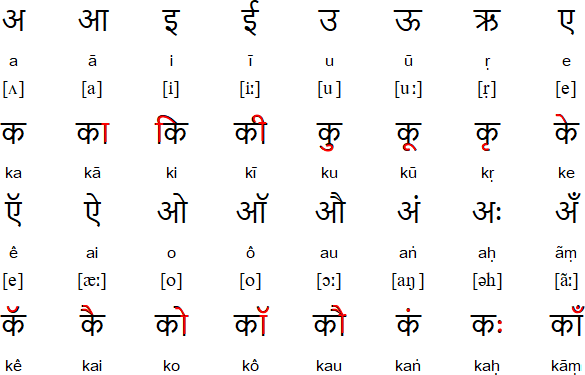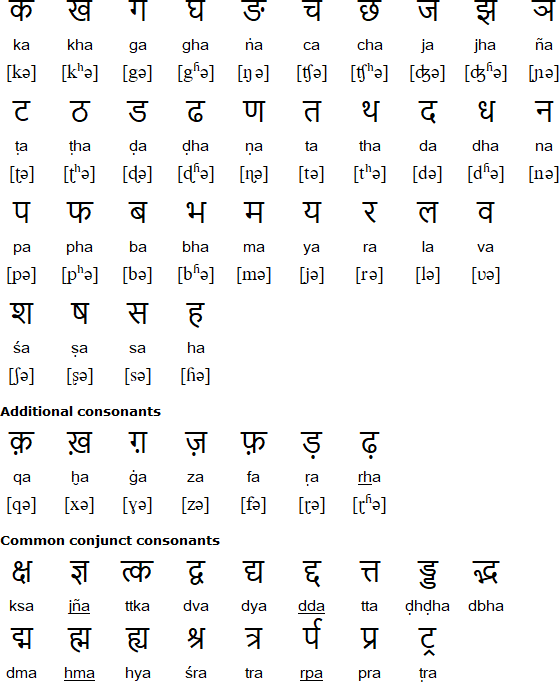Learn sanskrit 3
In the last post we have learnt some words their meaning and translation . Now in this post lets learn some small
lessons .
This is the daily routine of Raj :
मम दिन कार्यकर्म
मम नाम राज |
अहम् विवेकंदा विद्यालये पंचमं कक्षाम पठामि |
तत पशायत अहम् दंतुम करोमि |
दंतुम करिश्येते अहम् दुग्दम पिबामि |
तत पशायत अहम् स्नानं करोमि |
तद अनंतरम अहम् प्रार्थनाम करोमि |प्रार्थनाम करिष्ये अहम् अल्पाहरम करिष्यामि |
पशात अहम् विद्यालये गच्छामि |
विद्यालये समाप्ते अहम् चतुर्थ वादने गृहम गच्छामि |तद अनंतरम अहम् क्रिदयामी , गृह कार्यं करोमि| गृह कार्यं करिष्यते अहम् भोजनं करोमि | अन्ते अहम् दशवादने निद्राम करोमि |
mam naam Raj.
Aham vivekanda vidayalayae pancham kakshaam pathami .
tat pashyaat aham dantum karomi.
dantum karishye aham dugdam pibami
tat pashyat aham snanam karishyami.'
tad anantaram aham pratnam karishyami.
prartanam karishyate aham alpaaaharam karishyami.
pashyat aham vidhyalaye gachhami.
vidhalaye samampte aham caturth vadane gruham agachmai .
tad anantaram aham kridayami , gruh karyam karomi.
gruh karyam karishye aham bhojanam karishyami.
ante aham dash vadane nidram karomi..
My daily routine.
My name is Raj.
I am in 5th standard studying in vivekanda vidhyalaya school .
I daily get up by 7.00 in morning.
Then i brush my teeth.
After brushing i drink milk.
Later i go for bath.
After bathing i do prayer.
Then i have my breakfast.
After having brkfast i go to school.
Then i come by 4.00 clock after my school is over.
Then i play and do my home work.
After doing homework i have my dinner.
At the end i sleap by 10.00 clock.
Exersice
give the meaning for the following:
tad anantaram aham kridayami , gruh karyam karomi.
gruh karyam karishye aham bhojanam karishyami.
ante aham dash vadane nidram karomi..
My daily routine.
My name is Raj.
I am in 5th standard studying in vivekanda vidhyalaya school .
I daily get up by 7.00 in morning.
Then i brush my teeth.
After brushing i drink milk.
Later i go for bath.
After bathing i do prayer.
Then i have my breakfast.
After having brkfast i go to school.
Then i come by 4.00 clock after my school is over.
Then i play and do my home work.
After doing homework i have my dinner.
At the end i sleap by 10.00 clock.
Exersice
give the meaning for the following:
1. प्रतिदिने - Everyday
२. उथिष्ठयामी - Get up
३. निद्राम - sleap
४. अल्पाहरम - breakfast
५. दंतुम - brush
६. गृह्कर्यम - Home work
७. क्रिदायामी - Play
८. प्रार्थनाम - प्रयेर
९ दुग्दम - Milk
९ दुग्दम - Milk
Answer the Following question:
1. राज कदा उथिष्ठ्ती ?
rajah kada uthishtati?
When does Raj gets up?
राजः सप्तवादने उथिष्ठ्ती|
Rajah saptvadane uthishthati.
Raj gets up by 7.oo clock.
/
2. राजः कस्य कक्षाम पठति?
Rajah kasya kaksya pathati ?
In which class is Raj in?
राजः पंचमं कक्षाम पठति |
Rajah panchaman kaksham pathati.
Raj is studying in 5th standard .






